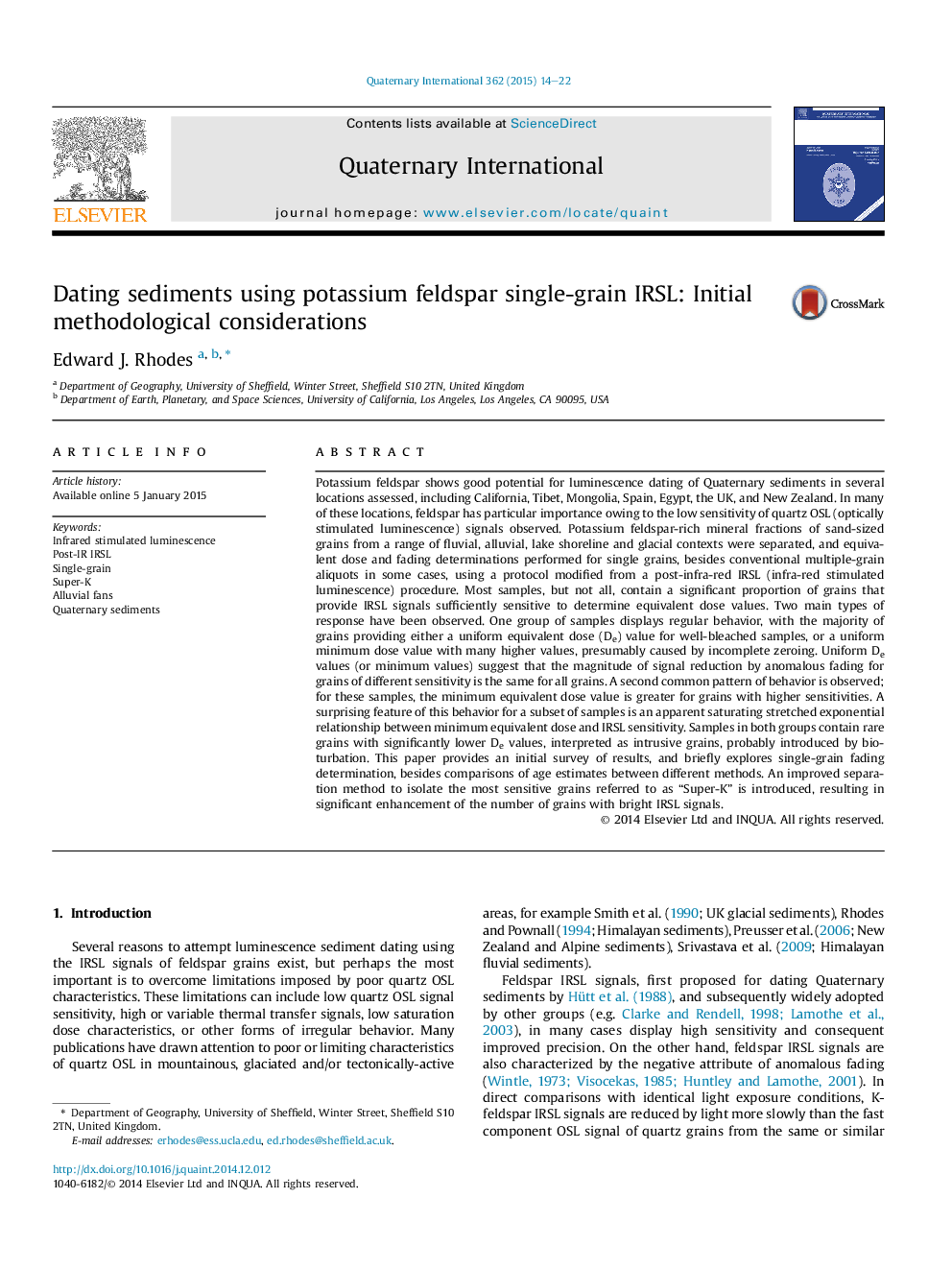| Article ID | Journal | Published Year | Pages | File Type |
|---|---|---|---|---|
| 1040836 | Quaternary International | 2015 | 9 Pages |
Potassium feldspar shows good potential for luminescence dating of Quaternary sediments in several locations assessed, including California, Tibet, Mongolia, Spain, Egypt, the UK, and New Zealand. In many of these locations, feldspar has particular importance owing to the low sensitivity of quartz OSL (optically stimulated luminescence) signals observed. Potassium feldspar-rich mineral fractions of sand-sized grains from a range of fluvial, alluvial, lake shoreline and glacial contexts were separated, and equivalent dose and fading determinations performed for single grains, besides conventional multiple-grain aliquots in some cases, using a protocol modified from a post-infra-red IRSL (infra-red stimulated luminescence) procedure. Most samples, but not all, contain a significant proportion of grains that provide IRSL signals sufficiently sensitive to determine equivalent dose values. Two main types of response have been observed. One group of samples displays regular behavior, with the majority of grains providing either a uniform equivalent dose (De) value for well-bleached samples, or a uniform minimum dose value with many higher values, presumably caused by incomplete zeroing. Uniform De values (or minimum values) suggest that the magnitude of signal reduction by anomalous fading for grains of different sensitivity is the same for all grains. A second common pattern of behavior is observed; for these samples, the minimum equivalent dose value is greater for grains with higher sensitivities. A surprising feature of this behavior for a subset of samples is an apparent saturating stretched exponential relationship between minimum equivalent dose and IRSL sensitivity. Samples in both groups contain rare grains with significantly lower De values, interpreted as intrusive grains, probably introduced by bioturbation. This paper provides an initial survey of results, and briefly explores single-grain fading determination, besides comparisons of age estimates between different methods. An improved separation method to isolate the most sensitive grains referred to as “Super-K” is introduced, resulting in significant enhancement of the number of grains with bright IRSL signals.
